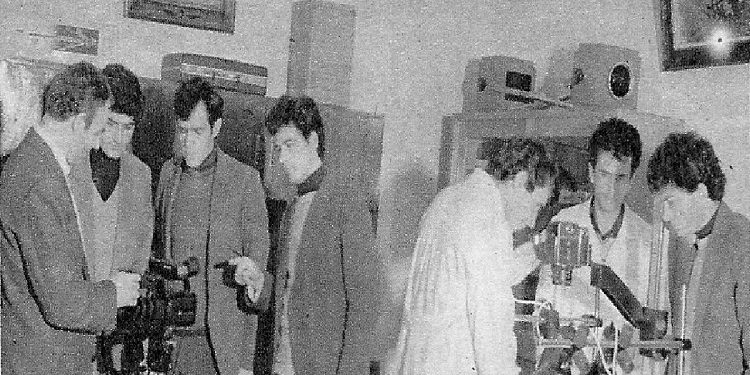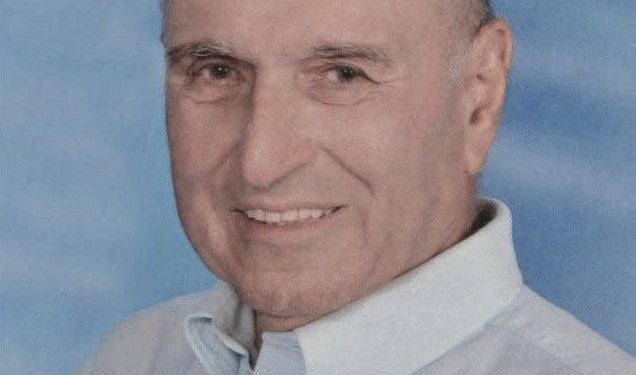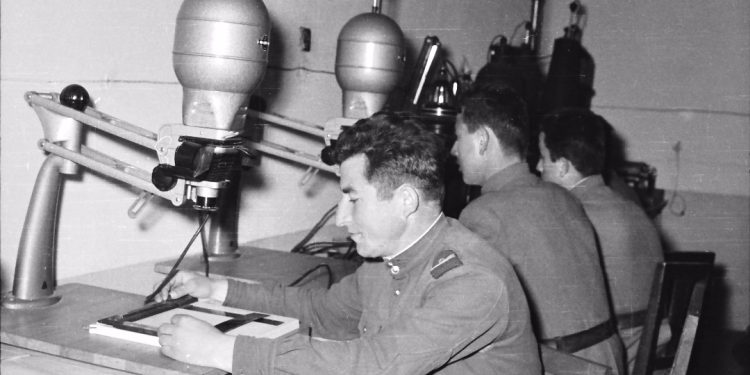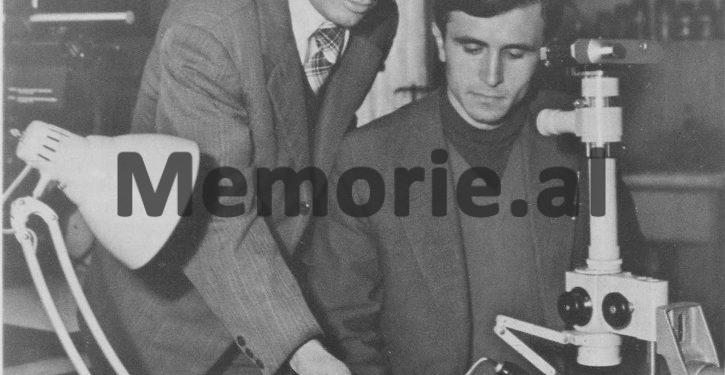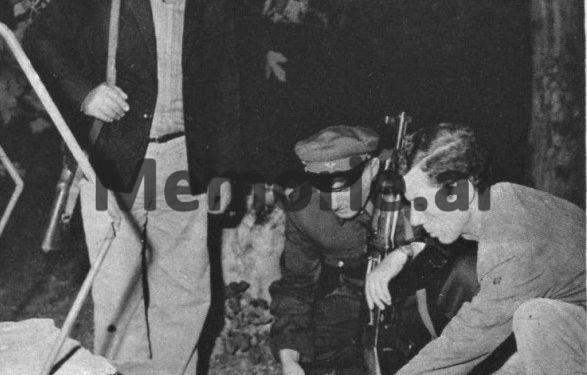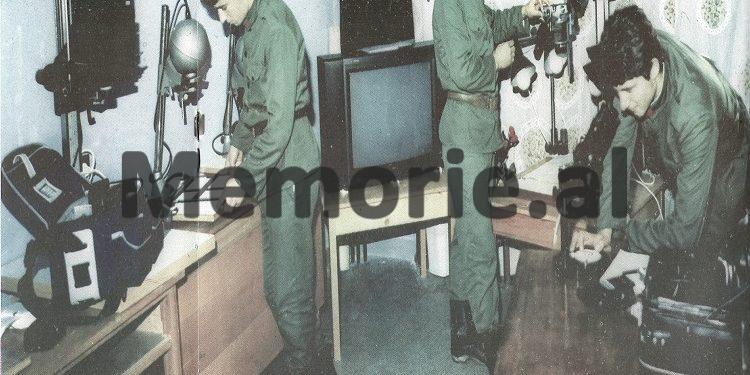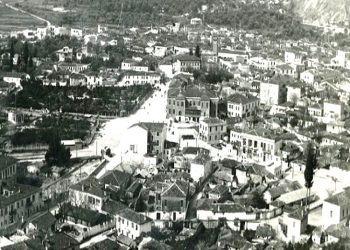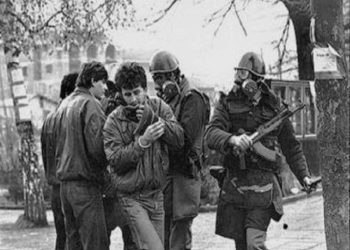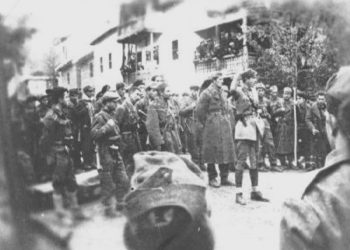By Prof. Dr. Bardhyl Çipi
Part Thirteen
SCIENTIFIC EVIDENCE OF STRIKING DEATHS
(Public figures, victims of the dictatorship, other events)
Memorie.al / Bardhyl Çipi, one of the most experienced specialists in our country in the field of Forensic Medicine and Bioethics, their teaching, and the training of young forensic experts. Some of his patients include: victims who were killed on the border while trying to escape the communist dictatorship, but whose hidden corpse was discovered with the help of his loyal dog; the interned woman who committed suicide out of despair; Kosovan citizens killed by Serbs because they sought to live free, not to be humiliated and tortured by them; residents who lived 1500 years ago in Albania; the University of Tirana professor who was robbed and murdered; etc. A book on death and the scientific evidence for discovering its different types: murder, suicide, cases stimulated and forced by the communist regime, murders and genocides against Albanians by their neighbors, fresh or decomposed and skeletonized corpses. Documents of the deaths of prominent figures: Kennedy, Lincoln, Napoleon, Lenin, Trotsky, etc., and other events involving the deaths of ordinary people. Knowledge about post-mortem changes and the examination of corpses in the world and in our country, from a historical, ethical, forensic, and legal perspective. Some of his recent books are: “Manuali i Mjekësisë Ligjore” (Forensic Medicine Manual) (2015), “Bioethics in Albania nowadays” (2016), “Tranzicioni shqiptar në lupën e mjekësisë ligjore” (The Albanian Transition through the Lens of Forensic Medicine) (2018), “Mjekësia Ligjore Kriminalistika” (Forensic Medicine Criminalistics) (2020).
Anthology of Forensic Examinations of Corpses from Various Incidents in Our Country
Identification of a Woman’s Corpse
In the 1990s, near one of our country’s cities, a corpse in an advanced state of decomposition was found in a garbage collection area. In the remnants of clothing and other objects near the body, some documents were also found, according to which the corpse should belong to a female citizen who had disappeared a few months earlier. The autopsy confirmed that the corpse belonged to a female, aged 30-35 years, etc., details which matched those of the missing victim.
However, for the most accurate determination of her identity, the odonatological examination, in cooperation with specialist dentists, had a decisive value. This examination revealed, among other things, the presence on the lower jaw, on the first and second molars on the left, which had been treated for complicated caries, of porcelain crowns glued together; the first lower right molar was missing before death and had been replaced with a porcelain bridge not long before death.
The dentist who had treated this patient, not long before her disappearance, had the laboratory model for the prosthetic work (the right bridge and the two porcelain crowns on the left), as well as the radiographs of these teeth, taken before treatment. By comparing the victim’s lower jaw with the laboratory model, a complete match was found.
Similarly, by comparing the pre-mortem and post-mortem radiographs, it was confirmed that the position, length, and shape of the roots of these teeth were in full agreement. Thus, the comparative odonatological examination in this case accurately proved the corpse’s identity.
Death from Careless Stomach Ulcer Surgery
This incident occurred in 1986. In January of that year, a 50-year-old patient was operated on at the civil hospital of a city. He had long suffered from a severe ulcer with duodenal stricture (the initial part of the small intestine connected to the stomach), experiencing severe pain and vomiting after eating.
After being discharged from the hospital, unfortunately, his health condition, instead of improving, progressively worsened, with increasing debility; the food he ate was excreted again, undigested.
For this reason, he returned several times for follow-up with the surgeons who had operated on him. During one of these visits, the surgeon told him: “There is nothing wrong with the surgery; you are very well; you just need to be careful with your diet.” After this, he gave him a prescription for medication.
After three months, in a state of extreme weakness, he was readmitted to the city hospital, but again there was no improvement. Under these circumstances, he was sent for resuscitation to the First Surgical Clinic of Hospital No. 2 in Tirana, but it was already too late. On June 5, 1986, at 6:15 PM, he died.
The autopsy revealed that a completely wrong operation had been performed. After the removal of the ulcerated area, the remaining part of the stomach, instead of being joined to the beginning of the small intestine, had been sutured to its end.
As a result of this severe negligence, all the food this patient ate from then on was not absorbed by the body, as it no longer passed through the small intestines, which are known to have the function of absorbing nutrients. Instead, this food passed directly from the stomach into the large intestine. This led to the patient’s gradual and progressive weakening, culminating in his death.
The fact that these sufferings lasted several months, during which the patient continuously complained to the surgeons who had operated on him and other doctors, further increases their culpability. Only a new surgical intervention, which could have corrected the first operation, would have made everything well for this patient. The court that reviewed the case found both surgeons guilty. One was sentenced to several months of correctional labor, and the other received a suspended sentence.
The Murder of the Shepherd in the Village of Krahës, Tepelenë District
In July 1979, I went with the investigation team and the head of the Tepelenë police to the village of Krahës. There, in a parcel planted with wheat, before the combine harvester entered to cut the grain, the driver doing a preliminary check discovered numerous human bones scattered on the ground’s surface in an area of 10-15 meters.
The bones appeared to be eaten and destroyed, with remnants of soft tissues. He immediately notified the police, and subsequently, the investigation team, which included me as the forensic doctor, organized the examination of these human remains.
I vividly recall the intuition of the head of the Tepelenë Police.
As soon as he saw the skull, he immediately declared that this was a murder case. Following his statement, I understood he was right, because the skull was missing the left cheekbone and the bump behind the left ear, both cut straight, and had several other linear fractures. These were injuries inflicted while alive, with a hard, sharp instrument, such as an axe.
It was suspected that this skeleton belonged to the shepherd of the village, last seen about 25 days earlier. In fact, such a short time frame, at first glance, seemed insufficient for an almost complete skeletonization of the corpse.
In truth, such rapid decomposition of the body is rarely encountered but is not impossible for an unburied corpse lying outdoors, under the direct influence of atmospheric factors, which may also be subjected to tearing and eating by various animals, as must have happened in this example, where the bone fragments were found to be eaten, destroyed after death, and simultaneously scattered.
The expert examination of this case accurately confirmed that the corpse belonged to this victim. Furthermore, the perpetrator of this crime, who was discovered a few days later, indicated that at the time the victim was grazing the village’s livestock near where the body was found, he had attacked him to rob him, hitting him several times on the head and upper body with an axe, an admission that was already confirmed by the results of the forensic examination.
A Rare Civil Case of the Misplacement of Two Graves!
In the city “L.”, due to the transfer of cemeteries, the remains of two elderly individuals, approximately the same age, were removed from their graves: one, Ali P., and the other, Adem B. During these operations, the remains of Ali P. were mistakenly placed in the new grave bearing the inscription Adem B., according to the claim of Ali P.’s son.
Adem B.’s daughter was notified of this, but she insisted that the remains in the grave were truly those of her father. Faced with this refusal, Ali P.’s son filed a lawsuit seeking recognition of his father’s remains located in the grave inscribed Adem B.
During the review of the case, it emerged that Citizen Ali P., who died in 1946, had a body height of 1.55-1.60 m, while Citizen Adem B., who died in 1955, was taller, reaching 1.75 – 1.80 m. To resolve this lawsuit, the bones extracted from the grave inscribed Adem B. were examined to determine which of the two corpses (Adem B. or Ali P.) the remains belonged to.
The examination of the bones found that the skull was quite damaged and some other bones were missing (right shoulder blade, humerus, ulna, and radius of the left side, one of the fibulae, as well as most of the small bones of the hands and feet).
Since the heights of the two deceased citizens differed significantly from each other (1.55 – 1.60 m for Ali P. and 1.75 – 1.80 m for Adem B.) and since the skull was quite damaged and could not be used for identification, the expertise focused only on determining the stature based on the existing long bones.
Measurements of the length of these bonds yielded the following results:
- Right Humerus: 31 cm.
- Right Ulna: 25 cm.
- Right Radius: 23 cm.
- Right Femur: 43 cm.
- Right Tibia: 35 cm.
- Right Fibula: 33 cm.
Using calculations based on known tables and formulas by various authors, it was concluded that the stature of the person to whom the examined remains belonged should be approximately 1.58 – 1.64 m. This height was close to that of Ali P. (1.55 – 1.60 m) and significantly further from the stature of Adem B. (1.75 – 1.80 m).
Based on this conclusion, the court ruled that the remains in the contested grave were to be recognized as belonging to the corpse of Ali P. (Case of Dr. Spiro Çipi and Doc. Bashkim Çuberi).
Death of an Italian Citizen from the Wrong Treatment with Baking Soda!
The application of wrong medical procedures with fatal consequences is still encountered today. With the opening of Albania in the 1990s, after a long isolation, the opportunity was created for not only the achievements of world biomedical sciences to be applied in our country but also for the improper and prohibited practice of medicine in various developed countries to be transferred and used here. This is perhaps due to the weaknesses observed in the functioning of the relevant medical control mechanisms in our country.
One such prominent case in our country’s forensic practice concerns the Italian doctor Tullio Simoncini, who was convicted and excluded from practicing medicine in Italy because his treatment of cancer with baking soda in Italy and Holland had caused the death of several patients.
According to Simoncini, cancer is a fungal infection (Candida fungus) that develops in a biological environment with an acidic reaction. Therefore, Simoncini found the treatment method by changing the pH, consequently claiming to stop the tumor’s development or cure it. For this purpose, he used high-percentage baking soda solution perfusions.
He stated that he had used this treatment for 20 years and that many of his patients had recovered, even when other doctors had predicted a fatal course. However, his theory, rejected by medical science, is wrong because baking soda, when introduced into the human body in large doses, significantly disrupts the mineral balance and causes the patient’s death, as happened in the cases for which he was convicted. Furthermore, this medical procedure has not been subjected to experimental tests using scientific methods.
In 2011, this doctor, through deception in the leading instances of our country’s health care system, was registered by the ‘Albanian Order of Physicians’ as a diabetologist and oncologist on behalf of the “Zoja e Këshillit të Mirë” Medical Clinic.
In 2012, he applied his method of cancer treatment with baking soda at a private hospital in Tirana to a 27-year-old Italian citizen suffering from a severe brain tumor. After the procedure of introducing baking soda into his body, the patient’s health condition worsened: headache, vomiting, small epileptic attacks, facial cyanosis, until he died on the way to the University Hospital Center of Tirana.
According to press reports, the forensic autopsy determined that his death was caused by acute pulmonary edema in a person with a malignant brain tumor treated with sodium bicarbonate (baking soda). The case was considered by Albanian forensic medicine and the prosecutor’s office as careless medical treatment, in the form of negligence, as this treatment is not recognized by contemporary protocols, leading to the patient’s death. Albanian courts convicted the guilty doctor in 2015, sentencing him to one and a half years in prison and a six-month suspension from the right to practice his profession.
This case shows that for our country’s health system, it is necessary to strengthen the control by the relevant authorities for the acceptance of foreign doctors practicing medicine here, including the review by the Ethics Committee of the treatment protocols in cases where foreign doctors use medical procedures that may be erroneous.
The Murder of the Boy from the “Students’ City” School in Tirana
This incident occurred in the 1980s at the high school of the “Students’ City” in Tirana, where students from all districts of our country were educated. On a clear day, in the afternoon hours, students from different districts were sitting together in the dormitory yard of this school.
One of the boys from a higher class, who was feared and obeyed by all the other students due to his arrogant and violent behavior, addressed a gentle first-year boy, ordering him to immediately get up and buy him a pack of cigarettes. Affected by the offensive tone of this order, the first-year student refused.
Following this refusal, the violent student attacked the first-year boy, continuously hitting and kicking him until he lost consciousness and died on the way to the hospital. The examination and autopsy of the corpse revealed minor signs of bruising and ecchymoses on various parts of the body’s external surface, while internally, a collection of blood was observed under the second membrane that surrounds the brain (subarachnoid hemorrhage).
Based on this finding, the autopsy report initially concluded that the death was caused by the hemorrhage, resulting from the rupture of a cerebral artery aneurysm. An aneurysm is a lateral enlargement of the blood vessel walls, which is a congenital malformation with weak walls that can easily rupture from violence or spontaneously. In this case, the rupture of this aneurysm may have also occurred due to the violence from the beating.
The victim’s family vehemently objected to this forensic conclusion; according to them, their son died immediately as a result of the savage beating. For this reason, the Prosecutor’s Office requested a new re-examination based on the case documents. The review of the investigative file contained many testimonies from the students present at the event, according to which the victim lost consciousness and died immediately after being kicked in the body by the aggressor, especially in the upper abdomen, a sensitive area due to the solar plexus located there behind the stomach.
These data fully align with what are called ‘functional inhibitory deaths’, which are rapid deaths occurring within a few minutes from reflex cardiac arrest, as a result of striking, perhaps not very pronounced, sensitive areas of the body, such as the front and side of the neck, the stomach area (where the solar plexus is located), around the external male genital organs, etc.
For example, literature mentions a case that occurred during an evening, where a dancing person jokingly grabbed his partner by the neck and watched in horror as she fell to the ground and died instantly. Usually, people with increased sensitivity of the vagus nerve or psychological instability, such as fear, emotions, etc., are more prone to this type of death. In causing this student’s death, the predisposing factors for this type of death must have also been present, such as fear and emotions that arose during his confrontation with the aggressor.
Thus, in this case, the violence exerted, which constitutes the cause, immediately resulted in the victim’s death. Regarding the hemorrhage of the brain membranes (subarachnoid hemorrhage), which was considered the cause of the victim’s death after the autopsy; this version was contradicted by neuro-surgical specialists. In consultation with their chief, Dr. Arian Xhumari, this type of fatal hemorrhage does not cause immediate death, as happened in this case.
Therefore, the occurrence of hemorrhage under the second covering membrane of the brain, which does not immediately result in consequences, had no connection to the death. Thus, from the forensic medicine perspective, this case was considered a clear murder. All these examples presented constitute some of the countless forensic examinations over a very long time that have served as scientific evidence for the Judiciary, mainly in discovering and prosecuting various criminal cases. Memorie.al




